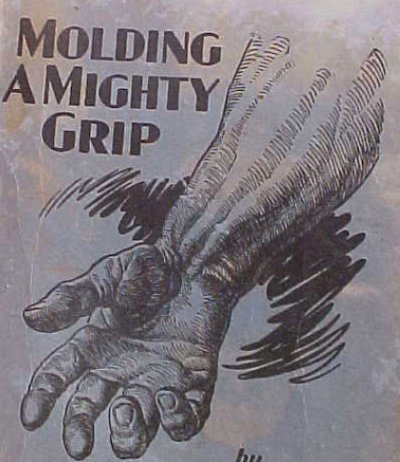
In this day and age, we all know (or should know) how important it is to maintain a healthy level of physical fitness in order to live a good quality life, maintain our cardiovascular system, and keep our bodies strong in order to thrive into our later years. For many of us, this means getting into the gym in order to do resistance training — one of the best forms of exercise that is available to us. For those looking to get back into the gym in order to maximize your health, strength, and vigor, one thing to take into consideration that is often forgotten or completely ignored is grip strength. “Grip strength? What does that have to do with anything?†you might ask. It may not make sense to you right off the bat to take time to train the hands and lower arms while at the gym. I know when I first learned about it, it seemed like a complete waste of time to spend valuable training time on less than 5% of your body, but the truth of the matter is having a strong grip pays many dividends both in your training and elsewhere.
What is Grip Strength?
Grip strength is often thought of as simply hand strength, and while hand strength is definitely included, there are actually many other things to consider when thinking of grip. First off, grip involves everything from the musculature near the elbow down to the fingertips. It has to be thought of this way because many of the forearm and hand flexor muscles actually originate above the elbow, and anytime a muscle crosses a joint, it will in some way influence it. As we move downward, the gripping muscles pass through the forearms, the wrists, and into the hands, fingers, and thumbs — and not only through the front of the forearms, but also the back of forearms. This is important to remember. When we look at grip in this manner, we start to see that there are MANY movement patterns that are realized by the lower arm musculature. As we train the lower arms, we must then remember to train all of these movement patterns in order to maintain a suitable balance between the antagonistic muscle groups, such as the flexors and extensors. In fact, many cases of inflammation-related forearm pain such as tendonitis, tendonosis and epicondylitis can arise due to improper training of the forearm muscles or simply neglecting certain muscle groups or movement patterns. 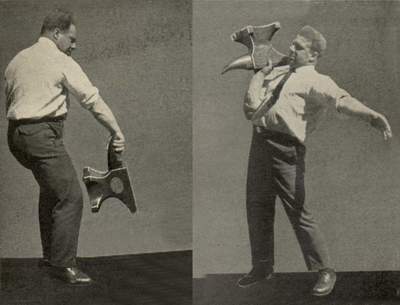
Benefits of Having a Strong Grip
There are many reasons men should seek to have a strong grip. They range from social reasons, to training reasons, and beyond. Let’s highlight a few.
Stronger Grip = Stronger Handshake. Whether it is right or not, men are often judged by their level of strength and by how strong they seem. Nothing is a better example of this than the need for a strong, hearty handshake. When you shake hands with a man and he looks you in the eye and gives you a solid squeeze back, it makes him seem more confident, dependable, and trustworthy. However, if they hit you with the proverbial “dead fish†handshake, they lose credibility and may even seem slimy and weak.

Stronger Grip = Better Endurance. When your hands and lower arms are strong, you can also perform more repetitions than someone whose weak hands are a liability. This means you will be able to perform more repetitions per set of an exercise, thus burning more calories, losing more fat, and building more muscle.
Stronger Grip = Better Later Life Quality. Research has now shown that grip strength has proven to be a reliable indicator for quality of life at an older age. For instance, in 1999 a study concluded the following:
“Among healthy 45- to 68-year-old men, hand grip strength was highly predictive of functional limitations and disability 25 years later. Good muscle strength in midlife may protect people from old age disability by providing a greater safety margin above the threshold of disability.â€
Stronger Grip = Better Injury Resiliency. Muscles and connective tissues that are strengthened are more injury-resistant, and if injury does end up taking place, stronger tissue can usually recover faster so that you are back on top of your game. This is particularly important for athletes who play contact sports, especially when the hands play such a major role in success. For instance, while players of football and basketball are highly dependent on the strength of their legs and core, their performance is hindered substantially just by jamming a finger or developing pain in the wrist or forearm. And breaking or spraining the wrist will land an athlete on the bench to watch the game from the sidelines.
Now that we have established that there is a lot more involved in grip training than just using our hands, and now that we know just how beneficial it can be to have a strong grip, let’s take a look at some of the many defined movement patterns that exist with grip training.
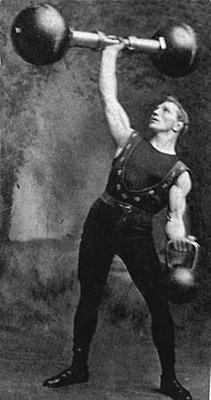
What is a Good Grip Strength for a Man?
The average healthy man can give a squeeze that applies 72.6 pounds of pressure. If you’re not there, you’ve got some work to do.
A strong grip is one that can apply at least 90 pounds of pressure.
Types of Grip Strength
There are many defined forms of gripping. Some involve primarily the hands while others involve action from the wrist and forearm as well. See below.
Hand Specific Movements
Crushing — Crushing is the action of closing the fingers against resistance. Similar in nature but often forgotten are clamping (wrapping the fingers around something and squeezing it toward the palm) and crimping (directing force with the fingers toward the callous line).
Pinching — Pinching involves grasping something with the thumbs in opposition to the fingers. This can be static (no movement, such as gripping a board) or dynamic (such as squeezing the handles of a clamp).
Supporting — Support grip entails lifting something with the fingers taking the brunt of a load — normally in an isometric fashion, like deadlifts, rows, and kettlebell work. It should be noted that true support grip entails the fingers wrapping well around the bar. If the handle is large enough that there is a space between the fingers and thumb, it is referred to as open hand support.
Extension — Hand extension is the opening of the fingers and thumb (antagonistic action to flexion of the fingers and thumb).
Wrist & Forearm Postures
Ulnar / Radial Deviation — Angling the wrist toward the inside or outside edges of the forearm. Shown above is ulnar deviation. Movement toward the thumb side would be radial deviation.
Flexion / Extension — Flexion is the bending of the wrist so that the palm moves toward the front of the forearm — shown above. Extension, then, is the antagonistic movement pattern and involves moving the wrist so that the back of the hand moves toward the back of the forearm.
Pronation / Supination — These are the terms given to forearm rotation. Pronation is the turning of the forearm so that the palm faces down (similar to prone, as in lying face-down), while supination is turning the forearm so that the palm faces upward (like a normal bicep curl).
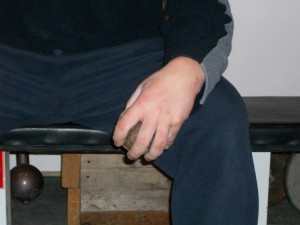
Circumduction — This is a combination of all of the above movement patterns, where the hand moves in a circular fashion about the wrist. It can also be done holding something, such as with the shot device shown above, as a leverage move.
Flexion (with Pronation) – Bending the elbow so that the forearm nears the bicep with the palm facing downward (like a reverse bicep curl motion). Shown above, this is a very important movement for preventing and getting rid of inflammation injuries like tennis elbow.
Flexion (with Supination) – Bending the elbow so that the forearm nears the bicep with the palm facing upward (like a normal bicep curl motion, not shown).
Extension – Straightening the elbow, such as in the bench press. Any weakness or liability in the surrounding musculature can decrease your numbers on the bench and other movements.
Common Grip Training Exercises
Grippers (Crush Grip)
There are many types of grippers on the market. The objective is to squeeze them so that the handles touch together. Some companies have certifications for closing their grippers. Grippers are probably the most popular form of grip training. Everyone should have a set. If you can close the number 3 from IronMind, you are considered to have a great crushing grip, and you can get certified (women can now certify on the number 2).
Plate Pinching (Pinch Grip)
This is done by setting up two or more plates smooth-sides-out and then lifting them off the floor in a pinch grip. Common combinations include 4-tens, 2-25’s, and 7-fives. If you can pinch 5-tens, 2-35’s, or 8-fives, then you have an excellent grip. If you can pinch 6-tens, 2-45’s, or 3-25’s, then you are world class.
Block Weights (Pinch Grip)
These are really any block-shaped device, but most often are broken or cut-off heads of a dumbbell that are lifted off the ground in a Pinch Grip. The most popular goal in grip training is to lift the 50-lb Blob, a half 100-lb dumbbell produced by York Barbell.
Thick Bar Lifting (Open Hand Support)
As the handle of a dumbbell thickens it becomes much harder to lift. The most widely recognized feat of thick bar strength is the Thomas Inch Replica Dumbbell, weighing roughly 172 lbs and having a nearly 2.5-inch thick handle. All one unit with non-rotating globe heads, as soon as the bells leave the ground the entire unit starts to spin, peeling your grip open. This dumbbell is named after a challenge dumbbell used by the strongman performer Thomas Inch in the 19th century.
Ways to Increase Grip Strength
There are many ways to develop your grip strength, beyond just using the equipment shown in the section above. However, it should be noted that while the classic hand and forearm work done and taught in gyms usually includes wrist curls, these really do not have anywhere near as big of an impact as other exercises.
Drop the Straps. In order to start challenging your hand strength and to start building a grip that will enable you to crush other mens’ hands (when so inclined) as well as to produce the lower arm strength that will be a huge asset in other forms of strength and fitness training, sports, and manual labor, the first thing you should do is to drastically reduce the use of lifting straps and other gripping aids in the gym. Sure, when you reach the upper levels of your pulling strength in movements such as deadlifts and rows, by all means strap in so that you can get your repetition goal, but on the lighter sets, there really is no need to use straps.
Open Hand Training
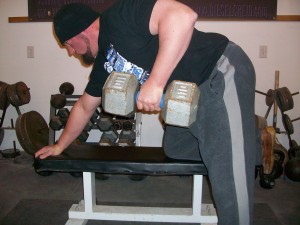
As far as grip-specific exercises go, the easiest thing you can do is to choose implements that force you to lift with your hand in a more open position. One simple way to do this is to use Fat Gripz or Grip4orce handles when performing your pulling and curling movements. These go right onto the handles of the implements and require more of your hands during the movement because your fingers cannot wrap completely around the bar or dumbbell.
Two Hands Pinch

World record in the Two Hands Pinch, December 2009: 256.04 lbs
Place two plates together smooth-sides-out, such as a pair of 35’s or 45’s. Then, run a pipe through the center hole and add more weight to the pipe. Grip the set-up in an overhand grip and try to lift it to lockout. You can go for maximum weight lifted or just perform repetitions or holds for time. The implement shown above is the adjustable device used in grip strength contests. The Two Hands Pinch is one of the staple events.
Towel Training
Towels can be used for instant thick and dynamic gripping surfaces (make sure it is a strong towel that won’t rip). For instance, you can loop a towel over a bar and perform pull-ups (similar to the rope pull-ups below), attach one to a cable machine for pull-downs and rows, or around a kettlebell (shown above) for an even more dynamic and metabolic method of training the grip.
Plate Curls 
Hook your thumb over the edge of a 25-lb plate and support it with your palm and straight fingers. Next, try to perform a curl with the plate, trying to keep your wrist and fingers from buckling under the pressure. This is one of the most basic grip training methods, yet one of the most difficult.
Inverted Dumbbell Lift
Stand a 30- to 40-lb dumbbell up on its head and try to lift it with one hand by the top in a claw grip. Use the number for a grip aid if you need to. Once you get it this way, try it without using the number. All dumbbells are different and vary in level of difficulty based on their shape, finish of paint, and more, but it is a very good training method.
Rope Training 

Rope training is awesome for cardio and conditioning, but many do not realize how hard it hits the grip and forearms as well.
Grip Training Guidelines for Beginners
While everyone can benefit from including regular grip training in their workout routines, not everyone is at the same level of strength and some people may be more susceptible to injuries. Because of this, keep these tidbits in mind as you begin and progress.
Start out light: Begin by modifying some of your regular lifting so that it is more grip-intense and then from there add more work. For instance, you can use a towel as the handle on rows for a couple of weeks to get the hands used to working harder, then you can begin adding other implements and techniques into the training as well.
Move up slowly: For those just starting out with grip training, I like to suggest one or two grip-intensive lifts per session once per week for two weeks. After two weeks, move up to two workouts where you include grip-specific lifts. After a month, shoot for workouts where you train the grip with serious intentions up to 3 times a week. This is usually enough for just about everybody.
Watch the volume: When performing grip lifts separate from the rest of your routine, keep an eye on the volume. Think of training volume as the number of sets and reps in a workout. Most people progress very well with grip strength if they stay in the 3 to 5 sets of 3 to 5 repetitions range when performing lifts like the Two Hands Pinch. That is a total of roughly 9 to 25 total attempts in a workout. It’s not that much.
Train the extensors: To keep progressing, make sure to include training for the muscles on the back of the hand, the extensors. You can do this easily and on the cheap by using the large rubber bands found on heads of broccoli or with #84 rubber bands from Staples. Wrap the rubber band around the fingers and thumb and then open them against the resistance of the band. This is a surprisingly effective way to work the extensors. If you can do more than 20 repetitions, then try adding another rubber band in order to increase the resistance or hold the opened position for 2 or 3 seconds before doing the next repetition.
________________________________________________
Jedd Johnson is a strength coach and competitive grip sport athlete. He holds the World Record in the Two Hands Pinch, a staple event in many grip strength contests and loves spreading the world about Grip Sport and the importance of strong hands for athletes. For hundreds of free articles on Grip Training, check out his website at DieselCrew.com, and for a free 8 weeks of Grip Training workouts, sign up here: Grip Program.
Related Content
- Embracing the Grind in Barbell Training
- Podcast: Scottish Highland Games and Training
- Cardio or Weights First?
- How to Establish an Exercise Routine



